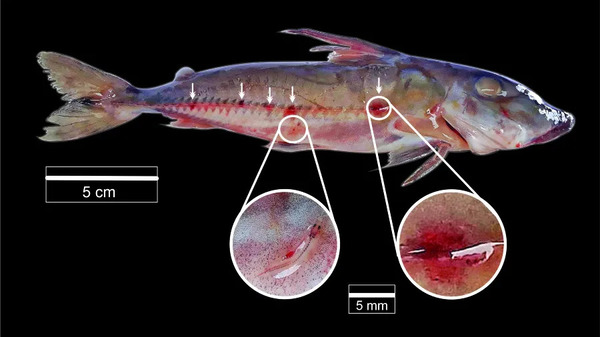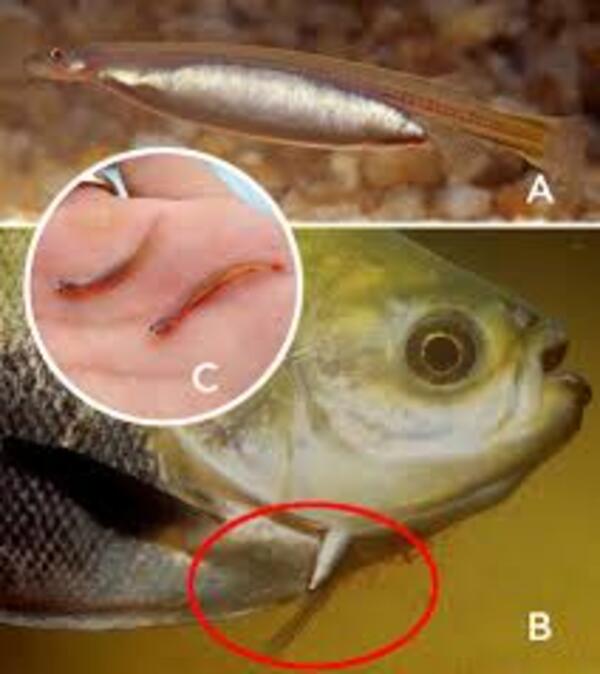When it comes to creepy creatures of the Amazon River, the Candiru fish often tops the list. Known for its reputation as a parasitic menace, this small freshwater fish has captured imaginations worldwide. But what’s the truth behind the myths? Let’s dive into everything you need to know about the Candiru, from its behavior and habitat to its controversial interactions with humans.

What Is the Candiru Fish?
Habitat and Environment: Where Does the Candiru Live?
How Does the Candiru Survive?
Lifespan, Reproduction, and Predators
The Myths: Can the Candiru Really Swim Up the Urethra?
Is the Candiru Dangerous to Humans?
How to Avoid Encounters with Candiru
Scientific Studies on the Candiru
Cultural Impact and Urban Legends
FAQs About the Candiru
The Candiru, scientifically known as Vandellia cirrhosa, is a small freshwater fish native to the Amazon River basin. It's a type of catfish, but unlike most of its family members, it’s infamous for being a parasite. Measuring just 1 to 2 inches long, the Candiru might be small, but it has a reputation that looms large due to its peculiar feeding behavior.
This slender, almost translucent fish is sometimes called the "vampire fish", thanks to its tendency to attach itself to the gills of larger fish, where it feeds on blood.
The Candiru is found in the Amazon River and its tributaries, a sprawling ecosystem home to countless unique species. This fish thrives in warm, fast-flowing freshwater. It’s perfectly adapted to its environment, using its slender body to sneak into tight spaces, whether that’s between rocks or inside a fish’s gills.
The Amazon River’s diverse ecosystem plays a huge role in the Candiru’s survival. The abundance of fish provides plenty of potential hosts for this parasitic creature.

The Candiru’s feeding mechanism is what makes it truly unique. Unlike other predators, the Candiru is a parasitic feeder. Here’s how it works:
The fish locates a host, typically another fish, using chemical cues in the water, such as ammonia released from the host’s gills.
Once it finds a host, it uses spines on its head to anchor itself to the gills.
It feeds on the blood or mucus from the host’s body.
This behavior is vital for the Candiru’s survival but harmless to its typical host under normal conditions.
The Candiru fish, also known as the "vampire fish," is an infamous inhabitant of the Amazon River. Beyond its notorious reputation, its biology offers fascinating insights. Here’s a detailed look at its lifespan, reproductive behavior, and the predators it faces in the wild.
Candiru fish have a relatively short lifespan, typically ranging from two to three years in the wild. Several factors influence their survival, including:
Environmental conditions: The health of their freshwater habitats plays a significant role. Changes in water quality, pollution, or habitat destruction can reduce their lifespan.
Availability of hosts: Since Candiru rely on parasitism for sustenance, the presence of suitable host fish impacts their longevity.
Predation risks: Being small and relatively defenseless, they are at constant risk of being preyed upon.
Despite these challenges, their specialized adaptations allow them to thrive in the competitive and diverse ecosystem of the Amazon River.
The reproductive behavior of Candiru fish is not well-documented compared to other species, but here’s what is generally understood:
Breeding Season: Candiru typically breed during the wet season, when the Amazon River’s water levels rise. This provides a safer and more abundant environment for both spawning and juvenile survival.
Egg Laying: Female Candiru lay eggs in fine sediment or vegetation found in the riverbed.
External Fertilization: Like many freshwater fish, fertilization occurs externally. The male releases sperm over the eggs to fertilize them.
Growth of Young: Juveniles are highly vulnerable during the early stages of life, often becoming prey for other aquatic animals. As they grow, they develop the parasitic behavior characteristic of adult Candiru.
The reproductive cycle is closely tied to the Amazon’s environmental rhythms, which help ensure the species’ survival despite its relatively small population in certain areas.

Despite its fearsome reputation, the Candiru fish is quite low on the food chain. Its small size and translucent body make it vulnerable to numerous predators. Some of the common threats include:
Larger Fish
Species like peacock bass and piranhas are known to prey on Candiru. Their sharp eyesight and aggressive hunting strategies make them effective predators.
Birds
Aquatic birds like herons and kingfishers often hunt in shallow waters where Candiru may reside, picking them off with precision.
Aquatic Mammals
River dolphins in the Amazon, such as the boto (pink river dolphin), can include small fish like Candiru in their diets.
Environmental Threats
Indirect predators like invasive species and human activities (e.g., overfishing or pollution) significantly reduce Candiru populations.
The Candiru’s survival strategy largely relies on avoiding detection. Its nearly invisible appearance and swift swimming help it evade predators. However, its size and lack of significant defensive adaptations mean it remains an easy target for a range of predators.
The Candiru may be small, but it plays a critical role in the Amazon River’s complex ecosystem. Its lifespan is modest, averaging two to three years, while its reproductive strategies ensure that new generations continue to thrive despite challenges. Though it’s infamous for its parasitic habits, the Candiru is also preyed upon by a variety of predators, demonstrating the balance of nature within its habitat. Understanding the life cycle of Candiru helps demystify this misunderstood fish and highlights its importance in the aquatic food web.
The most infamous story about the Candiru is its alleged ability to swim up a human’s urethra. The idea is terrifying: a small fish invading such a sensitive area, causing immense pain. But how much truth is there to this claim?
Here’s what we know:
The origins of the myth: This story likely started as a cautionary tale among locals, warning swimmers about the potential dangers of the Amazon.
Scientific evidence: There are no confirmed cases of this happening. Most researchers believe the chances are extremely slim, as the Candiru’s natural behavior doesn’t align with this myth.
While the thought is unsettling, it’s important to separate fact from fiction.
For the most part, the Candiru isn’t dangerous to humans. Its parasitic habits are targeted toward fish, not people. However, there are rare reports of Candiru entering wounds or orifices, but these are often exaggerated or misinterpreted.
In its natural habitat, the Candiru is more of a nuisance than a threat, and it plays a role in maintaining the ecosystem’s balance.
If you’re planning a trip to the Amazon, there are some simple steps you can take to avoid any close encounters with this infamous fish:
Wear protective clothing: Swimmers can wear snug-fitting swimwear or waders.
Avoid urinating in the water: It’s believed that Candiru are attracted to the ammonia in urine, although this claim is debated.
Stay in shallow areas: The fish tends to prefer deeper waters where it can find its usual hosts.
Scientists have been fascinated by the Candiru for decades, studying its behavior, anatomy, and myths. Research has revealed:
The Candiru uses chemical cues, like ammonia, to locate its host.
Its spines are designed for attaching to gills, not invading foreign objects like a human urethra.
While parasitic, it rarely causes significant harm to its host.
Understanding the Candiru helps debunk myths and appreciate its role in the Amazon ecosystem.
The Candiru’s notoriety extends beyond science. It’s become a subject of:
Horror stories: Often exaggerated, these tales are meant to warn swimmers about the dangers of the Amazon River.
Pop culture references: From documentaries to books, the Candiru is often portrayed as a “monster fish.”
Urban myths: Stories of Candiru attacks are widely circulated but rarely verified.
These tales, while fascinating, often overshadow the reality of the Candiru’s behavior.
Q: Can the Candiru really swim up the urethra?
A: Highly unlikely. There’s no verified evidence to support this claim.
Q: What do Candiru eat?
A: They feed on the blood and mucus of fish.
Q: Are Candiru dangerous to humans?
A: Not typically. While their feeding habits are parasitic, they rarely pose a threat to people.
Q: How big is the Candiru?
A: Most Candiru measure between 1 to 2 inches long.
Q: Where can I find the Candiru?
A: They’re native to the Amazon River basin in South America.
The Candiru may have a scary reputation, but most of it is based on myths and misunderstandings. In reality, this small fish is a fascinating example of adaptation and survival in one of the world’s most biodiverse regions. While it’s good to be cautious when swimming in the Amazon, there’s no need to fear the Candiru. Instead, appreciate it for what it truly is: a unique and misunderstood part of nature.
animal tags: Candiru
We created this article in conjunction with AI technology, then made sure it was fact-checked and edited by a Animals Top editor.